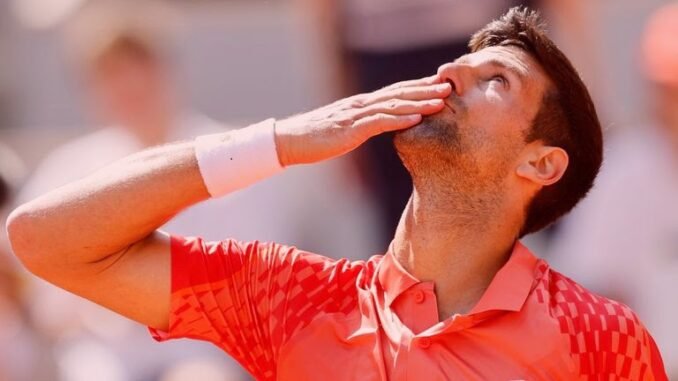
A Legendary Tour Through Tennis History with Novak Djokovic
Picture stepping through the gates of the All England Club and hearing the hush that stills Centre Court before the toss of a Wimbledon final. Now imagine that your tour guide is Novak Djokovic—part historian, part participant, and wholly a legend of the modern game. From humble beginnings in war-torn Serbia to the summit of virtually every statistical peak the sport offers, Djokovic’s journey doubles as a living syllabus on tennis history itself. Over the next several stops, we will follow his footsteps through eras, rivals, milestones, and signature moments that illuminate how the sport evolved and why his place in it feels both inevitable and astonishing.
Stop 1: The Baseline of Beginnings
Djokovic first picked up a racquet on makeshift courts at Kopaonik, a mountain resort with more skiing than grass court pedigree. Trained by Jelena Genčić—who had once coached Monica Seles—young Novak absorbed not just stroke production but tennis lore. Genčić played videos of Björn Borg’s laser-focused rituals, John McEnroe’s combustible genius, and Pete Sampras’s serve-volley poetry. Through her, Novak tasted three decades of champions before he turned ten, fusing their lessons into an all-court prototype. By the time he cracked the ATP Top 100 in 2005, he carried inside him the DNA of multiple eras, eager to test it against the legends still roaming the landscape.
Stop 2: Crashing the Federer–Nadal Duopoly
When Djokovic captured the 2008 Australian Open, it felt like a pitch invasion on tennis’s royal lawn. Roger Federer and Rafael Nadal had split the previous 11 Slams; the sport was effectively bilingual—spoken in Swiss elegance and Spanish topspin. Novak’s triumph signaled a trilogy in the making, and his athletic elasticity, impenetrable backhand, and return-of-serve wizardry redefined what “complete” meant. He grew into the ultimate stress-tester of opponents, stretching rallies beyond tolerance the way Borg once did, but with the shot-making versatility of Andre Agassi and the movement of a world-class gymnast. By 2011, Djokovic authored a 41-match win streak and won three majors, forcing fans to recalibrate GOAT calculus.
Stop 3: Rivalries That Shape Epochs
Tennis memory is etched in rivalries: Tilden vs. Cochet, Laver vs. Rosewall, Evert vs. Navratilova. Djokovic added multiple lines to that ledger. Against Nadal he has played more official matches than any men’s pairing in history, morphing from underdog to equal and often master on hard courts. Their 2012 Australian Open final lasted 5 hours 53 minutes, distilling the sport to its rawest essence. Versus Federer, Djokovic acquired a knack for late-match larceny, saving two championship points at Wimbledon 2019 before snatching the trophy in the first final decided by a 12-all tiebreak. These rivalries did more than build Novak’s résumé; they expanded tactical frontiers and physical limits, echoing through the sport much as Borg–McEnroe’s 1980 Wimbledon masterpiece once did.
Stop 4: Surfaces, Streaks, and Statistical Citadels
Historians love numbers, and Djokovic is a walking spreadsheet of records. He is the only man to win each major at least three times. His masters collection—39 and counting—surpasses all. He spent 428 weeks at No. 1, overtaking Steffi Graf’s overall record. Critics once claimed clay would remain his Achilles heel, yet he twice dethroned King Rafa in Paris and completed multiple career-long “Surface Slams”—winning majors on clay, grass, and hard courts within a 12-month window. Like Rod Laver’s 1969 Grand Slam chase and Martina Navratilova’s 74-match streak, Djokovic’s statistical annexations force historians to redraw the borders of possible.
Stop 5: The Science of the Self
Tennis history is not merely wins and losses; it is also evolution in training, nutrition, and mental mastery. Djokovic became a prime case study when he adopted a gluten-free diet after discovering celiac sensitivity in 2010. He integrated yoga, meditation, and breathing techniques, helping turn defense into counter-offense and endurance into a renewable resource. His flexibility evokes Novak’s idolization of Bruce Lee; his recovery routines borrow from cutting-edge sports science. Just as Björn Borg introduced rigorous cardiovascular fitness and Ivan Lendl pioneered off-season conditioning, Djokovic epitomized the 21st-century athlete who leaves no variable unmanaged.
Stop 6: Legacy in Motion
Some legends crystallize only after retirement, but Novak’s legend is dynamic, still accumulating. He has inspired a new generation of Serbians—think of US Open finalist Janko Tipsarević’s junior cohort or recent breakout Hamad Medjedovic—illustrating how belief scales nationally once a barrier is broken. Globally, his philanthropic Novak Djokovic Foundation channels resources to early childhood education, echoing Arthur Ashe’s model of service beyond sport. Debate persists over the “greatest,” yet Djokovic’s completeness—the hard-court mastery of Sampras, the clay conquest reminiscent of Nadal, the grass adaptability akin to Federer—embodies an anthology of champions rather than a single chapter.
Final Stop: The Continuum
As our tour ends, Djokovic looks across the net at Carlos Alcaraz and Jannik Sinner, next-gen prodigies who grew up studying him the way he once studied Borg and Sampras. History, like a topspin rally, loops back on itself. Novak stands both as guardian of bygone standards and as a living benchmark for future greatness. To walk through tennis history with Djokovic is to realize the sport is a relay; his baton glows with the sweat of predecessors and the promise of successors. And until he finally steps off court, the chronicle remains gloriously unfinished—an epic still being authored with each swing of that indomitable racquet.
Leave a Reply